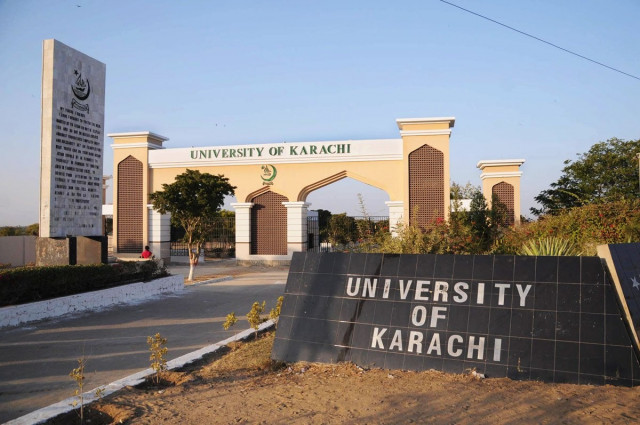KU looks to the final frontier
Speakers highlight women’s contribution at conference on World Space Week

Pakistan and space (the Star Wars Final Frontier kind) are seldom associated with each other or mentioned in the same sentence. However, the University of Karachi (KU) aimed to change that on Friday by celebrating World Space Week 2021, which concentrated on the role of women beyond the earth's atmosphere. It covered a full spectrum of space science from astronomy, astrophysics, cosmology, aerospace,
ionosphere, to remote sensing, global positioning systems, and geographical information science.
The Institute of Space Science and Technology organised a one-day international conference on space science and technology to mark the week.
The theme of World Space Week 2021 is Women in Space and the annual event is celebrated from October 4 to 10 to create awareness about space science.
The gathering was attended by a large number of students from different universities, researchers, and scholars. It was held at the Arts Auditorium.
Conference Organising Committee Secretary Hira Fatima talked about women in space and highlighted that females such as computer engineers and mathematicians played a very important role in putting man on the moon.
She mentioned that the first woman went to space in 1963 and until now, 65 others have gone to space as cosmonauts, astronauts, payload specialists, and space station participants. "Due to the research work women have been conducting at the International Space Station since 2001, they have become a crucial part of the programme." She added that taking into account the contribution of women in space exploration, NASA has decided to land the first woman and next man to Moon in 2024.
Meanwhile, KU Vice Chancellor Professor Dr Khalid Mahmood Iraqi appreciated that the ISST had taken the lead in the country to produce the necessary human resource for this important domain of science.
Read More: Agreement to ensure women’s safe travel
He also acknowledged the consistent collaboration of Pakistan's national space agency, the Space and Upper Atmosphere Research Commission, in the upgrade of KU's astronomy observatory. He also lauded the cooperation in arranging informative events, like one on Friday, in the past.
KU VC Professor Dr Khalid Iraqi hoped that this collaboration would go a long way in bringing awareness about the importance of space science education to the masses.
"Space technologies are becoming more and more important for our daily activities from the cellular network and navigation to self-driving vehicles. Now we can't consider social, commercial, societal and cultural development without any type of internet connection."
He mentioned that space science technologies have opened a new avenue for entrepreneurs. He said that Elon Musk is the best example and encouraged students, especially those of ISST, to have faith in themselves and take a step out of their comfort zone to make a difference. He appreciated the models of drones designed and operated by the students of ISST.
Meanwhile, a keynote speaker from the Chilean University of Concepción's Department of Astronomy, Dr Rafeel Riaz, during an online presentation on astrophysics, talked about the role of turbulence in star formation.
He informed the audience that turbulence, which is explained as the violent or unsteady movement of air or some other fluid, exists almost everywhere from the air people breathe, the weather they see to the surface of the Sun.
He mentioned that stars are formed in a cloud of gas and dust known as a nebula. These nebulae, which are also called star nurseries, seem to have turbulence too.
"When we compare the brightness of protostars, we observe in different surveys with the brightness predicted from theoretical models we see protostars are dimmer than the models predict."
He explained that this poses a question about disconnect of star formation theory and observation. "This question can be answered in the context of astrophysical turbulence which exists at all possible scales due to supermassive black holes, supernovae explosions, etc. Simulation models incorporating the turbulence showed that gravity can drive additional turbulence which subsequently affects the velocities which then control the process of star formation."
Published in The Express Tribune, October 9th, 2021.


















COMMENTS
Comments are moderated and generally will be posted if they are on-topic and not abusive.
For more information, please see our Comments FAQ